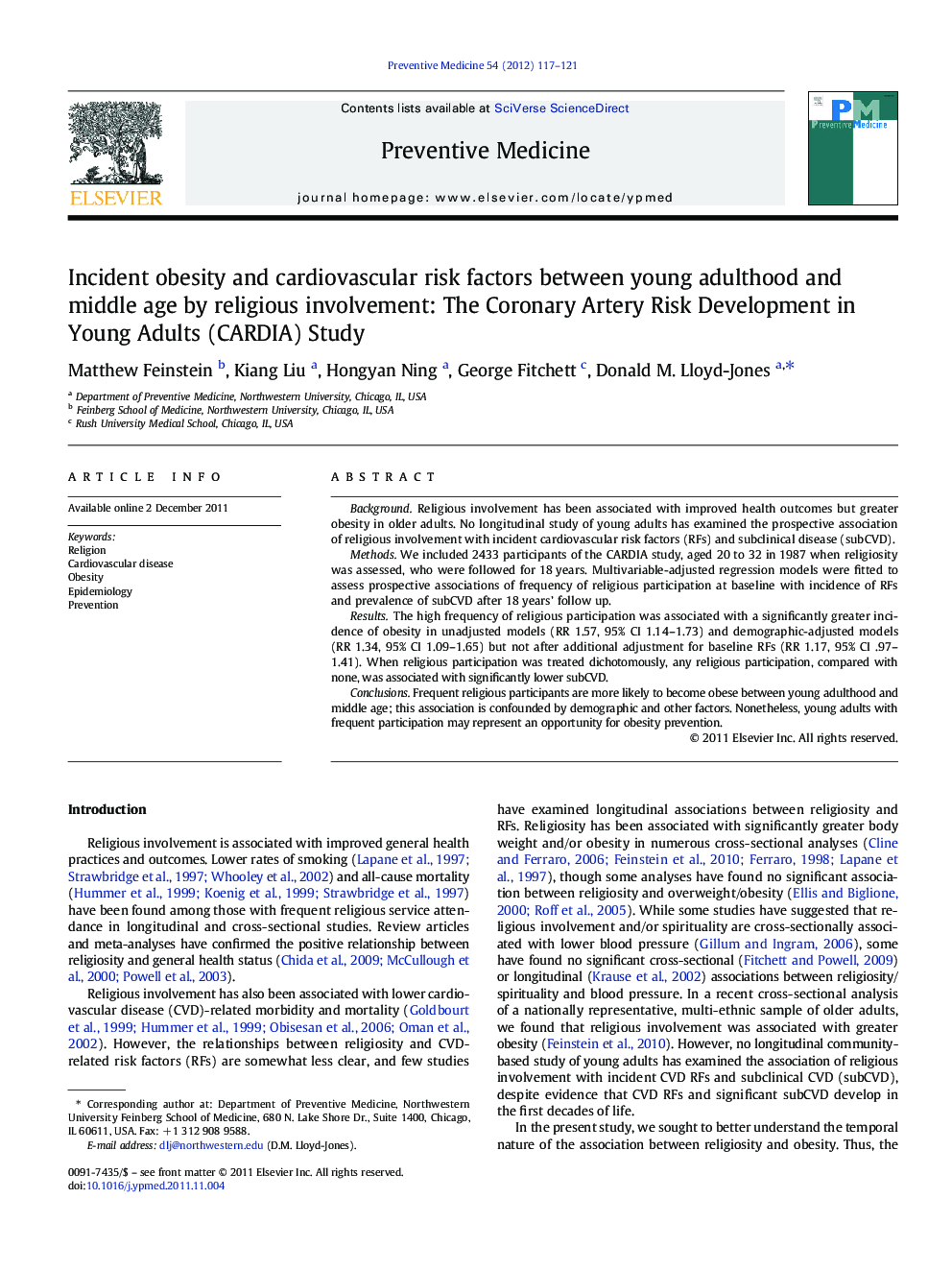| Article ID | Journal | Published Year | Pages | File Type |
|---|---|---|---|---|
| 3100909 | Preventive Medicine | 2012 | 5 Pages |
BackgroundReligious involvement has been associated with improved health outcomes but greater obesity in older adults. No longitudinal study of young adults has examined the prospective association of religious involvement with incident cardiovascular risk factors (RFs) and subclinical disease (subCVD).MethodsWe included 2433 participants of the CARDIA study, aged 20 to 32 in 1987 when religiosity was assessed, who were followed for 18 years. Multivariable-adjusted regression models were fitted to assess prospective associations of frequency of religious participation at baseline with incidence of RFs and prevalence of subCVD after 18 years’ follow up.ResultsThe high frequency of religious participation was associated with a significantly greater incidence of obesity in unadjusted models (RR 1.57, 95% CI 1.14–1.73) and demographic-adjusted models (RR 1.34, 95% CI 1.09–1.65) but not after additional adjustment for baseline RFs (RR 1.17, 95% CI .97–1.41). When religious participation was treated dichotomously, any religious participation, compared with none, was associated with significantly lower subCVD.ConclusionsFrequent religious participants are more likely to become obese between young adulthood and middle age; this association is confounded by demographic and other factors. Nonetheless, young adults with frequent participation may represent an opportunity for obesity prevention.
► We examine religiosity in young adulthood and development of cardiovascular risk. ► Participants were followed for 18 years, to middle age. ► Frequent religious participants were less likely to develop coronary calcification. ► Frequent religious participants were more likely to become obese by middle age. ► These findings suggest an opportunity for targeting obesity prevention.
